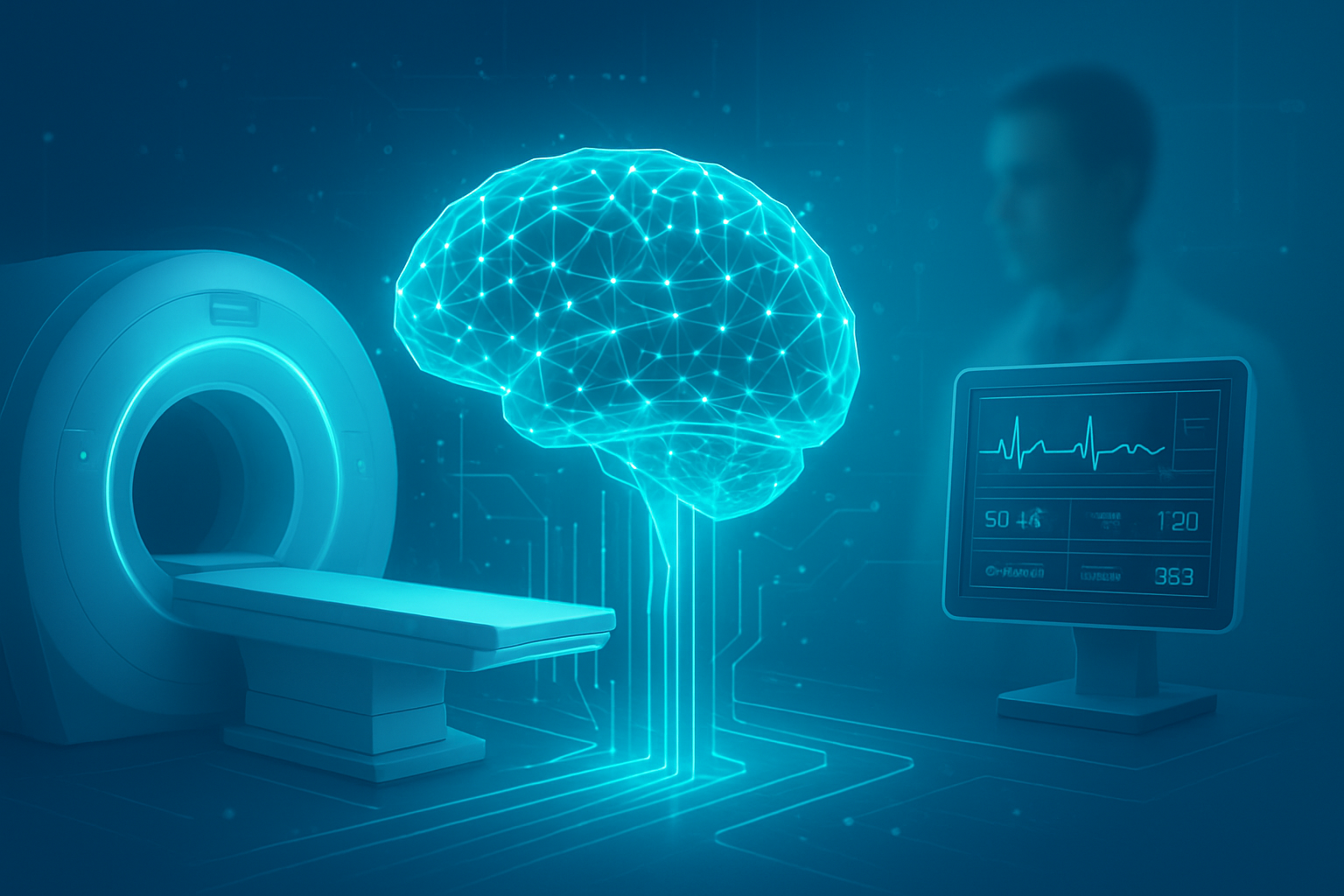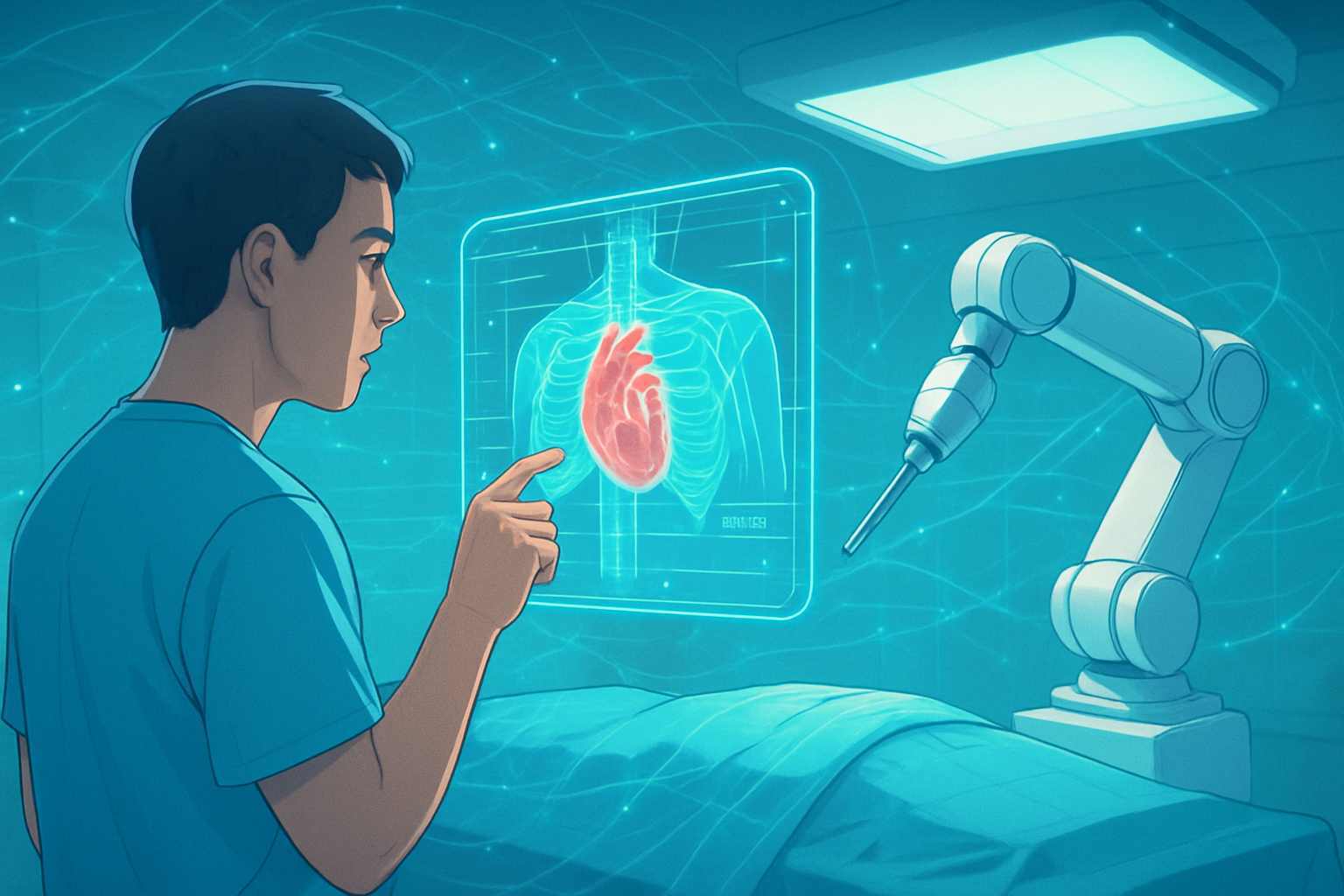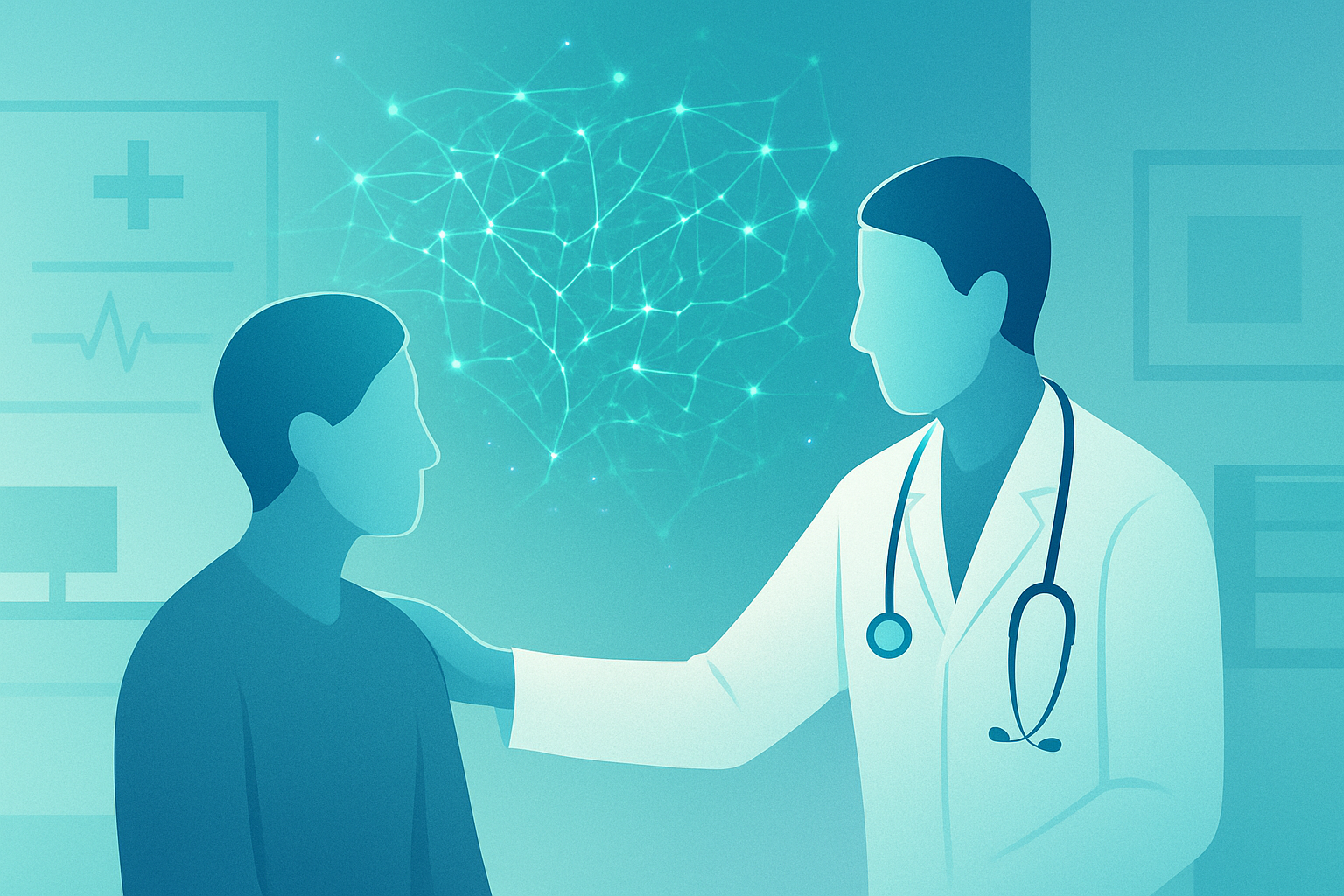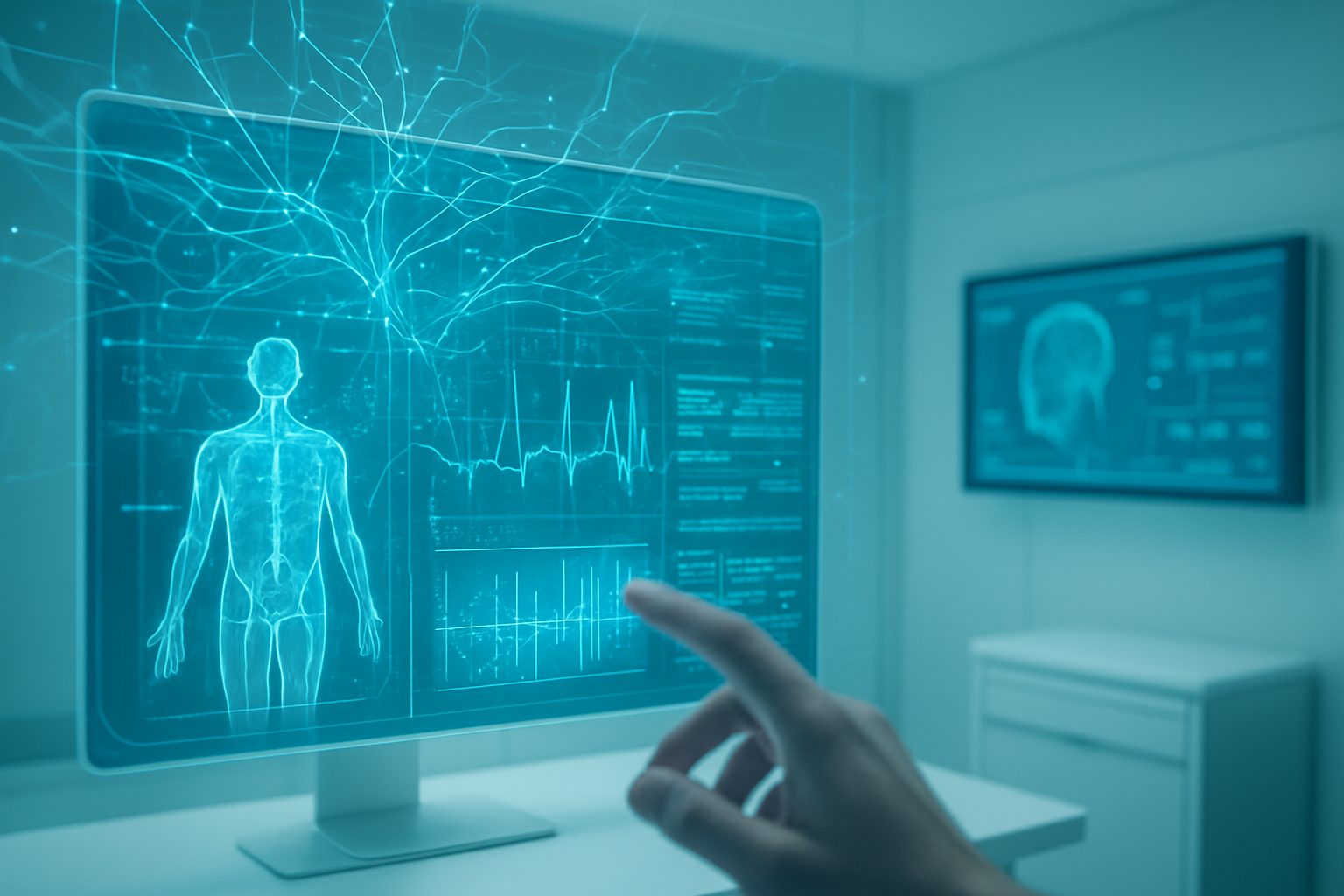A groundbreaking convergence of artificial intelligence and medical imaging is poised to revolutionize prenatal care, dramatically improving the detection of congenital heart defects (CHDs). This significant breakthrough promises earlier diagnoses, more timely interventions, and ultimately, enhanced outcomes for countless newborns affected by these common birth abnormalities. The integration of AI into routine prenatal ultrasounds is not merely an incremental improvement but a transformative leap, offering a crucial "second opinion" that augments clinician expertise and addresses the critical shortage of specialized fetal cardiologists.
Recent advancements, particularly the FDA clearance of AI-enabled software from companies like BrightHeart in November 2024, signal the readiness of these technologies for widespread clinical adoption. Studies have already demonstrated remarkable efficacy, with AI-powered systems boosting the detection rates of suspicious findings for major CHDs to over 97%. Beyond accuracy, AI assistance has been shown to reduce reading times by 18% and increase clinician confidence by 19%, streamlining the diagnostic process and allowing medical professionals to reach conclusions with greater assurance. This is especially impactful in settings where ultrasounds are performed by general obstetricians, who may lack extensive training in fetal heart abnormalities, thereby leveling the playing field for prenatal diagnosis globally.
The Technical Edge: Deep Learning Deciphers Tiny Hearts
The core of AI-assisted ultrasound for CHD detection lies in sophisticated deep learning models, primarily various architectures of Convolutional Neural Networks (CNNs). These networks are meticulously trained on vast datasets of ultrasound images and videos—sometimes comprising over 90,000 exams—to analyze complex patterns in fetal cardiac anatomy. Techniques like ensemble methods, YOLO (You Only Look Once) variants, and DenseNet, have achieved impressive sensitivity and specificity, often surpassing traditional human-only diagnostic methods. For instance, some AI algorithms detect CHDs with 95-96% accuracy, compared to 88-90% for traditional approaches.
These AI systems differ fundamentally from previous approaches by significantly reducing operator dependence. Traditional fetal echocardiography is highly reliant on the sonographer's skill and experience, making it susceptible to variability. AI addresses this by automating image acquisition, segmenting complex anatomy, performing precise measurements, and flagging potential abnormalities. Tools can automatically measure heart chamber sizes, calculate ejection fractions, and provide automated assessments for 2D, Doppler, and M-mode images, performing these tasks accurately and in seconds. Furthermore, explainable AI (XAI) is being integrated to improve the interpretability of AI decisions, fostering greater trust among clinicians. Companies like UltraSight (TLV: ULTR) utilize geometrical deep learning to guide cardiac ultrasound image acquisition in real-time, ensuring diagnostic-quality images even for less experienced operators.
Initial reactions from both the AI research community and medical experts have been overwhelmingly positive. There's a strong consensus that AI acts as an "augmented intelligence" tool, enhancing human expertise rather than replacing it. While recognizing the transformative potential for improved outcomes and increased access to care, experts also emphasize the need for continued validation, ethical considerations, and a collaborative approach where AI assists, and humans confirm. The FDA 510(k) clearances for BrightHeart and Sonio (EPA: ALSON) software signify a crucial regulatory endorsement, paving the way for broader clinical adoption.
Reshaping the Medical AI Landscape: Winners and Disruptors
The advent of AI-assisted ultrasounds for CHD detection is having a profound impact across the AI industry, creating both opportunities and competitive pressures for startups, tech giants, and established medical imaging companies. This technology is not just an enhancement; it's a catalyst for market repositioning and strategic advantages.
Specialized startups are at the forefront of this innovation. BrightHeart (Paris, France), with its FDA-cleared B-Right platform, stands to significantly benefit by integrating its AI into standard ultrasound equipment, showing improvements in detection rates and reduced reading times. Sonio (Paris, France), another FDA-cleared femtech company, offers manufacturer-agnostic AI software for automated ultrasound reporting and abnormality detection. UltraSight (TLV: ULTR) is gaining traction with its AI-driven real-time guidance for cardiac ultrasound, enabling a wider range of healthcare professionals to perform high-quality cardiac exams, including through collaborations with institutions like Mayo Clinic. DeepEcho (Morocco) is also making strides with FDA 510(k) clearance for its fetal ultrasound analysis platform, aiming to democratize quality ultrasound even for minimally trained clinicians. Other notable players include Ultromics, Caption Health, and iCardio.ai, all contributing to the broader cardiac ultrasound AI space.
Established tech giants and medical imaging companies are also strategically positioning themselves. Philips (AMS: PHIA), a global health technology leader, is integrating next-generation AI into its EPIQ CVx and Affiniti CVx ultrasound systems, leveraging AI from its acquisition of DiA Imaging Analysis and collaborations with NVIDIA (NASDAQ: NVDA). NVIDIA itself benefits immensely as the provider of foundational hardware (GPUs) and software toolkits that power many of these AI models. United Imaging (SHA: 688636) is expanding its imaging portfolio with native AI in its uSONIQUE ultrasound family. While not directly mentioned for CHD ultrasound, Google (NASDAQ: GOOGL) Research's involvement in machine learning for cardiotocography and Microsoft's (NASDAQ: MSFT) broader AI initiatives in healthcare suggest their interest in leveraging AI for clinical decision-making at scale.
The competitive landscape is characterized by both specialization and integration. Startups focused purely on AI algorithms will compete with established companies integrating AI directly into their hardware. Partnerships are becoming crucial, with many medical IT vendors collaborating with third-party AI companies. A significant competitive advantage lies in access to large, high-quality datasets for training and regulatory clearance, which acts as a key barrier to entry. This disruption will shift the reliance from purely manual interpretation to augmented intelligence, expand point-of-care ultrasound (POCUS) capabilities, standardize screening, and drive demand for interoperable solutions that seamlessly integrate with existing medical ecosystems.
A Wider Lens: AI's Impact on Healthcare and Society
The widespread adoption of AI-assisted ultrasounds for CHD detection represents a significant milestone within the broader AI landscape, signaling a shift towards more precise, efficient, and accessible healthcare. This advancement aligns perfectly with the growing trends of deep learning and machine learning in medical imaging, automation for workflow efficiency, and the move towards personalized and predictive medicine. AI's ability to analyze vast amounts of medical images and patient data is enabling patient-specific insights, tailored treatment plans, and even the prediction of disease progression.
The broader impacts are overwhelmingly positive. Earlier and more accurate diagnoses of CHDs will lead to significantly improved patient outcomes, potentially saving lives and enhancing the long-term health of affected infants. AI can also bridge critical gaps in specialist shortages, democratizing access to expert-level prenatal diagnostics in underserved and remote areas. For clinicians, AI tools will enhance workflow efficiency by automating routine tasks, reducing diagnostic errors, and alleviating burnout. Furthermore, by optimizing imaging resources and minimizing unnecessary tests, AI can contribute to substantial cost savings within healthcare systems.
However, this transformative technology also brings important concerns. Ethical considerations include the potential for bias in AI algorithms if trained on unrepresentative datasets, leading to health disparities. Questions of accountability arise when AI-driven diagnoses are incorrect, and the "black box" nature of some AI systems challenges transparency and clinician trust. Data privacy concerns are paramount, with risks of re-identification, questions of consent for data sharing, and the ever-present threat of cybersecurity breaches. Ensuring compliance with regulations like HIPAA and GDPR is a continuous challenge. While fears of job displacement exist, the prevailing view is that AI will augment, rather than replace, roles like sonographers and radiologists, allowing them to focus on more complex cases, interdisciplinary collaboration, and patient communication. This necessitates adapting roles and continuous learning for healthcare professionals.
Comparing this to previous AI milestones, the current development builds upon early computer-aided detection (CAD) systems of the 1980s but leverages far more sophisticated deep learning. It mirrors breakthroughs like Google's AI detecting lung cancers with higher accuracy than humans, or FDA-approved AI for diabetic retinopathy. The shift is towards AI's predictive power, forecasting diseases years in advance, and its ability to act as a collaborative, integrated tool rather than just a reactive one.
The Horizon: What's Next for AI in Fetal Cardiology
The future of AI-assisted ultrasounds for CHD detection is dynamic, promising continued advancements that will deepen its integration into clinical practice and expand its reach. In the near term (1-5 years), we can expect further refinement in automated image acquisition and standardization, with AI systems providing real-time guidance to ensure high-quality, consistent images regardless of operator experience. AI will increasingly act as an enhanced screening tool, identifying suspicious findings in routine scans and streamlining workflows through faster analysis and automated reporting. AI-assisted auscultation is also emerging as a complementary tool.
Longer-term developments (5+ years) envision AI moving beyond initial detection to more sophisticated diagnostic capabilities, classifying specific CHDs with greater precision, assessing severity, and predicting outcomes. The integration of ultrasound data with other clinical parameters, such as fetal MRI and genetic information, will enable personalized prognoses and treatment planning. Research into autonomous ultrasound scanning systems for CHD identification is also underway, potentially performing screenings with minimal human intervention. The fusion of multi-modal data, combining previous medical reports with current scans, is predicted to significantly enhance diagnostic precision.
Potential applications and use cases are vast, ranging from elevating routine prenatal screening in non-specialized settings to bridging diagnostic gaps in resource-limited areas. AI will serve as an invaluable training and education tool for sonographers and residents, accelerating their learning curve. Its integration into point-of-care ultrasound (POCUS) devices will make high-quality diagnostics more accessible at the bedside and in remote clinics.
However, challenges remain. Continuous access to large, diverse, and high-quality datasets is crucial for developing robust and unbiased AI algorithms. Seamless clinical integration requires addressing clinician acceptance, guarding against "algorithm aversion" or "automation bias." Ensuring algorithm generalization across diverse populations and equipment, alongside robust ethical frameworks for data privacy and accountability, will be paramount. Regulatory bodies like the FDA and the EU are actively developing frameworks for AI in medical devices, focusing on transparency, explainability, and managing continuously learning algorithms.
Experts predict that AI will fundamentally transform cardiac care, not by replacing human experts, but by empowering a wider range of medical professionals to capture and analyze high-quality cardiac images more effectively. This "accelerator for access" will provide more data from more patients, faster than ever before. Clinicians foresee AI-based software significantly improving detection rates even among non-specialists, driving earlier diagnoses and positively impacting neonatal outcomes. A thorough understanding of AI's uses and pitfalls is expected to become a mandatory skill for healthcare professionals in fetal cardiology.
A New Chapter in Medical Diagnostics
The rapid evolution of AI-assisted ultrasounds for congenital heart defect detection marks a pivotal moment in medical history. This development signifies a profound shift in prenatal diagnostics, offering unprecedented opportunities to improve lives by catching critical conditions earlier and more accurately. The key takeaways are clear: AI is enhancing diagnostic precision, democratizing access to expert-level care, and streamlining clinical workflows, all while presenting a new frontier for ethical and practical considerations.
This breakthrough is not just an incremental improvement; it's a testament to AI's growing maturity and its capacity to address complex, life-critical challenges in healthcare. It underscores AI's role as a collaborative partner, augmenting human intelligence and extending the reach of specialized medical expertise. The long-term impact will undoubtedly reshape prenatal care, leading to healthier starts for countless infants and more efficient healthcare systems globally.
In the coming weeks and months, the focus will be on the broader adoption and implementation of FDA-approved AI software tools in more hospitals and imaging centers. Further clinical trials and real-world data will be crucial for validating the long-term efficacy and impact on patient outcomes. We must also watch for the continued evolution of regulatory guidelines, particularly concerning data privacy, algorithmic transparency, and accountability. The integration of multi-modal data, combining imaging with patient history, will be a key area of development. Finally, the ongoing dialogue around physician training, addressing data bias, and navigating ethical concerns will shape the responsible and equitable deployment of these powerful AI tools. This new chapter in medical diagnostics promises to be one of profound positive change, demanding careful stewardship and continuous innovation.
This content is intended for informational purposes only and represents analysis of current AI developments.
TokenRing AI delivers enterprise-grade solutions for multi-agent AI workflow orchestration, AI-powered development tools, and seamless remote collaboration platforms.
For more information, visit https://www.tokenring.ai/.









